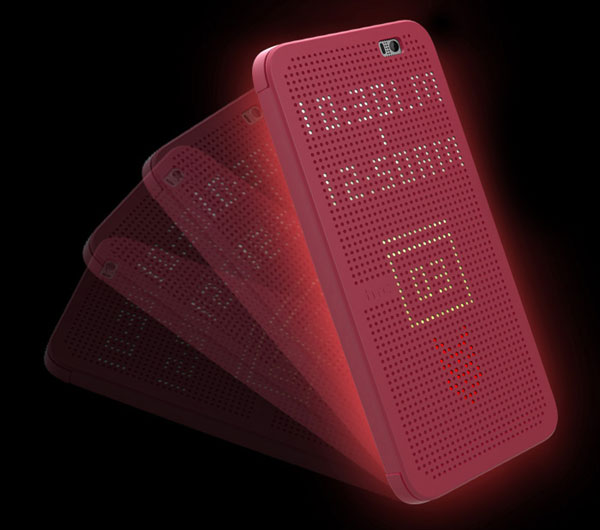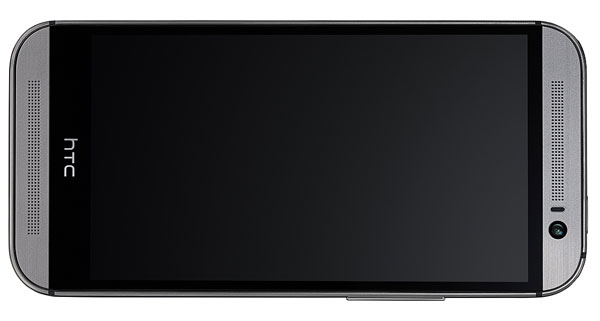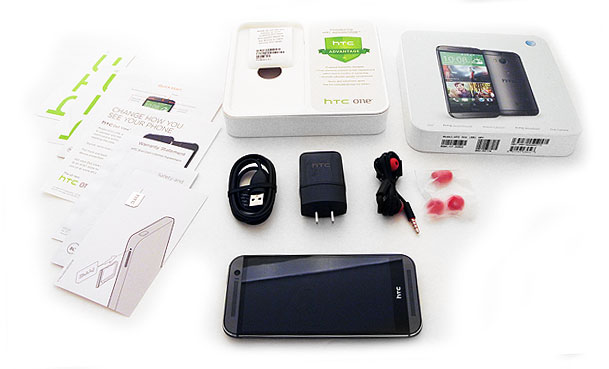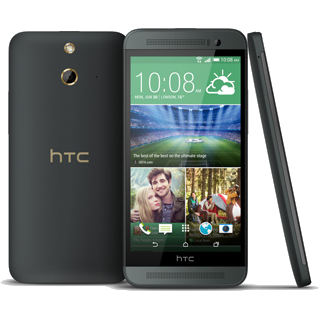HTC One (M8) And One (E8) Review: A Flagship And Its Sidekick
We run HTC's flagship Android smartphone, the One (M8), through our exhaustive benchmark suite. In addition, we take a close look at its less expensive sibling, the HTC One (E8). Both devices are compared and tested against a strong field of competition.
Call Quality, Accessories, Options, And Availability
Let's talk about one of the phone's most basic and essential functions: audio quality during a call. I did some testing with an iPhone 5 and Lumia Icon, and found that the HTC One (M8)'s microphone is about as good as its competition. When it comes to the speaker element, though, there seems to be a smaller sweet spot your ear needs to be over if you want to hear the person you're talking to at an optimal volume. Once you're accustomed to this, it becomes second nature. However, it's an idiosyncrasy unique to the One.
HTC sent over the Dot View case to go with our One (M8). There's also a Dot View case available for the E8. If you're not familiar with this accessory, it's a thin cover that protects the smartphone from scratches. But it also has a special ability, illustrated below:
The perforations allow the One's screen to display blocky 8-bit-style data when the cover is closed. HTC's hardware senses the accessory and changes modes accordingly. Touch input is recognized in this configuration. You can double-tap to see time and weather information, or swipe to accept (or reject) incoming calls. The feature is undeniably cool, simultaneously delivering on its promise to prevent scratches.
Fun though it may be, the case isn't perfect. First, it's not designed to open all the way. You're prevented from taking pictures unless you make sure the cover doesn't obstruct the camera; to do that, you have to fold it at an odd angle. It doesn't lay flat on a table with the case attached. Instead, it flops around at about a 20-degree angle. There's a cut-out for the front-facing camera, but the camera turns off with the case closed, so I haven't figured out a way to use it that way.
On one hand, those weaknesses are almost a deal-breaker. On the other, it's such a cool accessory that owners of the One (M8) and (E8) are going to want to at least try the Dot View case out. I'd recommend you give it a shot.
I also want to bring up the One's speakers, even though they're neither accessories nor options. HTC redesigned its drivers, and I have to say this is one of the best-sounding, loudest phones I've heard, as a result. Obviously, there's not enough room to generate meaningful bass. But the volume, clarity, and depth are impressive for a pocket-sized device. I watched the Guardians of the Galaxy trailer at full volume, and my wife came in from two rooms away because she heard my test so clearly. This phone isn't going to replace a nice discrete wireless system. However, it might replace entry-level Bluetooth-connected speakers.
In North America, the One (M8) is available from all major carriers, including Sprint, T-Mobile, Verizon, and AT&T. Two-year contract pricing ranges from free to $200, depending on your provider. Or, the hardware can be purchased outright for $450 to $670. Again, I'm hoping the One (E8) makes its way to North America as well; it costs almost half as much as the One (M8)'s MSRP in some markets.
Get Tom's Hardware's best news and in-depth reviews, straight to your inbox.
The phones are compatible with a wide range of cellular bands, but are configured differently depending on your geographic location. The options include LTE (700/800/850/900/1700/1800/1900/2100/2300/2600 MHz) and HSPDA (850/900/1700/1900/2100 MHz).
In addition to cellular connectivity, HTC's One (M8) and (E8) are equipped with Bluetooth 4.0 and 802.11a/b/g/n/ac Wi-Fi radios. I used a Bluetooth-attached mouse and keyboard with the phone and both worked flawlessly.
The only accessories included in the M8's box are an AC-to-USB adapter for charging, a USB-to-microUSB cable, earbud-style headphones, and documentation.
As for options, most are determined by whether you go with the M8 or E8. Again, the M8 comes with 32 GB of storage capacity, a metallic body, the dual-lens camera system, and an IR blaster. The E8 has 16 GB of flash, a polycarbonate chassis, one rear-facing image sensor, and no IR blaster.
Current page: Call Quality, Accessories, Options, And Availability
Prev Page Android KitKat And HTC Sense 6 Software Tour Next Page Camera Features And Example PhotosDon Woligroski was a former senior hardware editor for Tom's Hardware. He has covered a wide range of PC hardware topics, including CPUs, GPUs, system building, and emerging technologies.
-
Heironious The pricing says 1,309.00 for it on Amazon? May as well buy it straight from an authorized dealer for half that. It's a gorgeous phone and I don't regret picking it up over the Samsung S5 (mostly because of the cheap plastic of Samsung).Reply -
LordConrad I love my M8 except for that stupid depth-camera, they should remove it and bring back OIS.Reply -
JOSHSKORN Just stop comparing to the iPhone 5s until a comparable 64-bit chip is released and implemented into Android phones. Until then, the iPhone 5s "appears to be faster" (only on benchmarks) but as many of us know, it justifies buying an iPhone for most users, even though a 64-bit processor in a mobile phone may be pointless (for now).Reply -
CaedenV If I were the android type I would get this phone hands-down. If they released a WP version then I would jump all over it over the stuff Nokia has been pushing out in 2014 so far.Reply
The only 'complaints' that I have are the lack of wireless charging (impossible due to the metal back plate right?), and the lack of a sort of Nokia Glance screen (though other android devices are picking up similar features). The cover seems to bring that Glance functionality... but I really don't like that cover and would rather not. The thing is that with my lowly 920 I have built myself an upright wireless charging stand, and with glance screen enabled whenever the device has access to power, it makes a most excellent clock/notification center. With my 920 approaching 2 years old I am starting to look for a replacement, and as of the moment I am not finding one. WP has seemingly abandoned the high end devices, I am not apple compatible, and Android devices have a lot of really neat features... but then you deal with non-standard UIs and gimmickey software. I really hope something really good comes out before Christmas because the 920 is not getting any younger. -
stevessvt Wow, these benchmarks are, by far, the lowest I have seen for the M8. 27K in Antutu? Was power saver on?Reply -
Avus Holy!! $1300 for a phone.... I am too cheap for that...Reply
I am currently using Nexus 5 and happy with it. If I want to buy a phone now, I may want to get an Oneplus One. -
envy14tpe Great phone but that camera is what holds me back from buying it. So Samsung or Google gets my money, although Apple has the best camera. (However, no Apple..screen wayyy to small...Android flagship phones have been over 4" for 2+ years)Reply -
TeKEffect Me and my friend are both having problems with the usb port. They went cheap on the cheapest part. I would google the problem before getting the one.Reply





